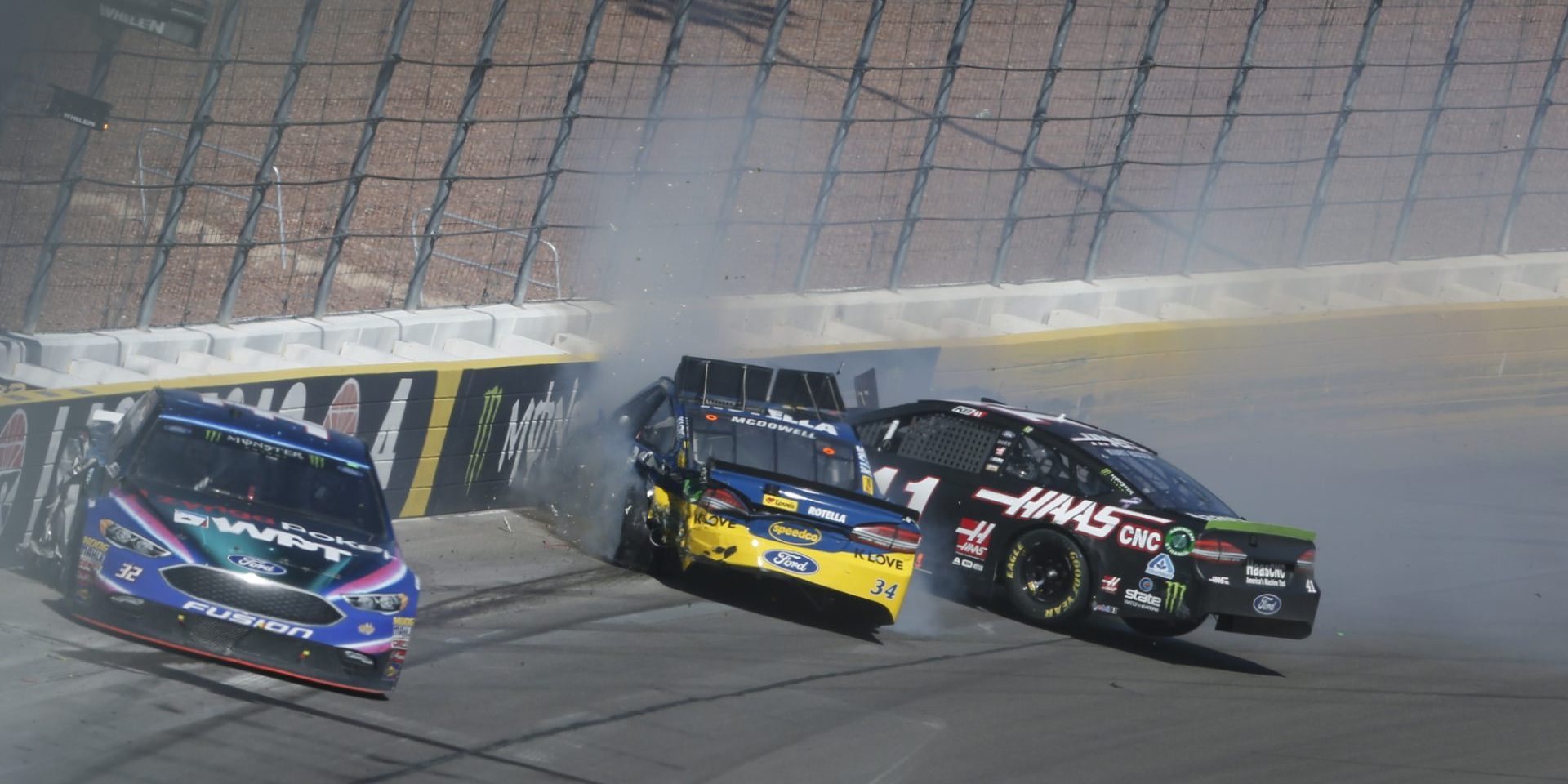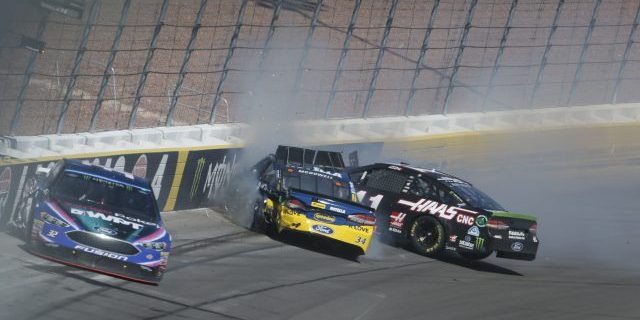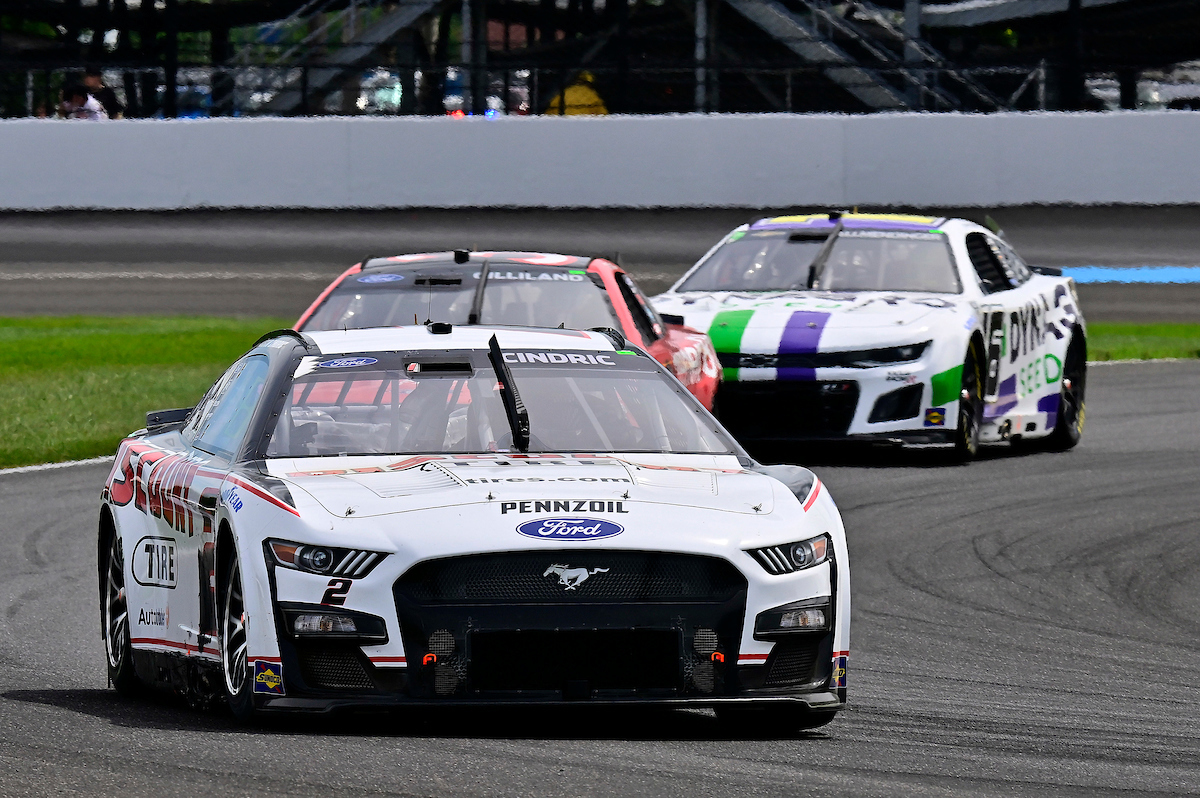Is There A Reverse In NASCAR? Understanding Gearbox Functionality


NASCAR vehicles are designed for speed, agility, and endurance, with a focus on forward motion in high-intensity races. A common question that arises among fans and newcomers to the sport is whether these specialized racing machines come equipped with the capability to reverse. In fact, NASCAR cars do include a reverse gear within their gearboxes, which is a standard feature in manual transmissions.
Having a reverse gear is necessary for NASCAR cars for practical reasons, despite the fact that the sport itself does not require racing in reverse. These vehicles must be able to navigate various scenarios off the race track, such as maneuvering in and out of garages, fitting into tight spaces, or repositioning after overshooting a pit stop. The inclusion of a reverse gear is also a regulatory requirement, ensuring that the cars adhere to specific safety standards and operational needs.
Table of Contents
Understanding NASCAR Transmissions
NASCAR vehicles are equipped with highly specialized transmissions that cater to the demands of high-speed racing. These are intricate systems designed to cope with the rigors of competitive driving.
Transmission Types and Functions
NASCAR cars historically used manual transmissions, more specifically four-speed manual transmissions, which are known for their durability and simplicity. These H-shift transmissions require drivers to engage and disengage the clutch manually when selecting gears. The introduction of the Next Gen car brought a significant change—a six-speed sequential gearbox. Unlike the H-pattern layout, a sequential gearbox allows drivers to shift gears in succession, which can lead to faster and more efficient gear changes.
Manual vs Automatic Transmissions
Race cars in NASCAR have always employed manual transmissions as opposed to automatic transmissions. The manual transmission demands more skill and involvement from the driver, providing better control over the vehicle’s acceleration and speed. Automatic gearboxes, while common in consumer vehicles for convenience, lack the direct control and feedback required in racing environments.
Reverse Gear Mechanism
Despite NASCAR cars being designed for forward motion at high speeds, regulations and functionality necessitate the inclusion of a reverse gear. Whether it’s a four-speed manual transmission or the newer six-speed sequential gearbox, both possess a reverse gear, which is essential for maneuvering the vehicles during pit stops or after spinning out on the track. This reverse mechanism allows drivers to back up their vehicle when necessary, using the same manual process as changing to forward-moving gears.
The Role of Reverse in NASCAR
The inclusion of reverse gears in NASCAR vehicles is not solely a racing requirement but serves specific functions related to vehicle recovery and pit lane activities.
Regulations and Racecar Specifications
NASCAR regulations allow cars to have manual transmissions with reverse gears. Although these gears are seldom used during the races, they are a mandated feature for each vehicle. Reverse gears play a minor role during actual competition, as NASCAR cars are engineered for high-speed forward movement, with the rear axle designed to withstand the rigors of racing.
Incidents and Recovery Procedures
In the event of a crash or when a car spins out and ends up facing the wrong direction, the ability to engage reverse can be pivotal. This function enables drivers to reposition their vehicles without the aid of the pit crew or retrieval by a trailer. During a caution period, where speed must be reduced and safety takes priority, the reverse gear can facilitate minor repositioning without causing additional delay to the race.
Pit Stall Maneuvers
Reverse gears are particularly relevant during pit stop maneuvers. The constrained space of the pit stall can occasionally necessitate slight backward adjustments for optimal positioning or to exit the stall after servicing. This utility of the reverse gear is critical as it ensures that the servicing process is conducted effectively, and the vehicle can rejoin the race with minimal time lost.
NASCAR’s emphasis on the forward motion during races highlights the limited use of reverse, but its inclusion in the vehicle’s design is essential for the times when it is necessary, such as correcting a stall entry or recovering from an off-course incident.
NASCAR Cars Compared to Other Racing Vehicles
Comparing NASCAR vehicles to others in motorsport, especially Formula 1, reveals significant differences in design philosophy, technical specifications, and race dynamics. Understanding these distinctions provides insights into each category’s unique challenges and engineering solutions.
Stock Cars vs F1 Cars
In the world of motorsport, NASCAR’s stock cars and Formula 1 (F1) machines represent two distinct breeds. The former, embodying the essence of stock car racing, is based on modified versions of production cars, notably designed for oval tracks. In contrast, F1 cars are purpose-built racing vehicles, meticulously engineered for a blend of speed and agility on a variety of track configurations, including chicanes and tight corners.
Where NASCAR cars resemble production vehicles like the Chevy Corvette in appearance, F1 cars bear no resemblance to road cars with their open-wheel design and lower stance. This visual distinction mirrors their operational differences: stock cars prioritize durability for close-contact racing while F1 cars focus on lightweight components and aerodynamic efficiency for maximum speed and balance.
Technical Specifications
The technical specifications of NASCAR and F1 vehicles showcase their intended performances.
- Weight: While the exact weight varies, a NASCAR vehicle, such as the Next Gen car, typically weighs around 3,200 pounds without a driver. In contrast, an F1 car, following the 2021 rule change, must weigh a minimum of 752 kg (1,658 pounds) including the driver.
- Horsepower: NASCAR engines generate around 550 to 670 horsepower depending on the track type. Comparatively, F1 cars’ hybrid power units can produce in excess of 1000 horsepower.
- Safety: Both sports prioritize driver safety, with NASCAR’s Gen Six vehicles featuring advancements in crash-absorbing technologies and F1’s incorporation of devices like the Halo to protect drivers from debris.
Gear and Speed Dynamics
Comparing gear and speed dynamics, NASCAR cars have a four-speed manual transmission with an incorporated reverse gear, which has been present since early stock car racing days.
- Forward Speeds: These cars are optimized for high top-speeds on oval circuits, often reaching forward speeds of up to 200 mph.
- Rev-Matching: When shifting, NASCAR drivers manually match the engine speed to the gear, a skillful practice demanding precision.
F1 cars, on the other hand, present a stark contrast. With semi-automatic transmissions that can have up to eight forward gears, they offer advanced rev-matching systems providing rapid shifts without manual input. F1 vehicles excel with their fast acceleration and higher cornering speeds, supported by their lightweight construction and powerful engines.
Technical Evolution in NASCAR
NASCAR’s history is marked by continuous technological advancement, reflecting the changing regulations and demands of stock car racing. These developments have played a key role in shaping the cars, races, and fan experiences over the years.
Historical Changes in NASCAR Auto Technology
The NASCAR industry has witnessed a significant evolution in auto technology since its inception. Gen One racecars, which marked the early years of the series, were closely tied to the production models they represented, with minimal safety features and technological complexity. Over time, advancements such as improved fiberglass bodies, refined rear suspensions, and the introduction of spoilers have greatly enhanced performance and safety. Regulation changes often drove these advances, ensuring NASCAR race cars were better adapted to the challenges of high-speed racetracks.
The Impact of NASCAR’s Next Gen Car
The Next Gen car, representing the latest new generation of NASCAR vehicles, ushers in a fundamental shift in design and capability. These cars boast a more modern appearance reminiscent of showroom models, which is significant for industry stakeholders who desire a closer connection between NASCAR and consumer cars. Notable introductions include an H-pattern to a six-speed transmission and updated roof flaps designed for improved aerodynamics and safety. As NASCAR drivers compete in environments like the Xfinity Series race, these technological enhancements are not merely for show but serve as critical elements in driver performance and vehicle durability.
Future Prospects for NASCAR Engineering
Looking forward, NASCAR’s engineering prospects continue to adapt to the evolving landscape of the automotive industry. Anticipated advancements in areas such as hybrid technology may find their way onto the track, reflecting broader changes in vehicle design and energy use. The balance between maintaining the heritage of the sport and embracing technological progress will guide the future of regulations and NASCAR race cars. As the complexity of these vehicles increases, so does the skill set required by racecar drivers and teams to maintain competitiveness in a fast-paced industry.
NASCAR’s Unique Appeal and Fan Experience
NASCAR provides a distinct experience that unites rich tradition and high-paced excitement, characterized by a unique racing culture and consistent technological advancements aimed at enhancing both safety and entertainment value.
Race Dynamics and Spectator Engagement
Race characteristics: NASCAR races feature an array of powerful, naturally aspirated V8 engines and a steel tube frame chassis that is suited for high-speed racing on oval tracks. Unlike open-wheel counterparts like Formula 1, NASCAR vehicles lack significant aerodynamic features. This design places a premium on driver skill, particularly in maneuvering and timing the use of the clutch pedal. The gear lever is utilized frequently, as drivers skillfully navigate through tight packs at high speeds, often leading to a thrilling wreck that fans watch with bated breath, always safely contained by rigorous safety measures.
- Engagement: Fans are drawn to the close-quarter battles and the constant suspense of position changes. On specific tracks, cars exhibit reverse skew to optimize performance, making each race a unique battle against both the competition and the track itself.
Safety Measures and Regulations
NASCAR’s commitment to safety is evidenced by the rigorous regulations it enforces to protect drivers and fans. The cars are constructed with a durable steel tube frame designed to withstand high-speed impacts. On the road course or oval track, modifications like reverse skew are closely monitored to comply with NASCAR’s strict safety standards. The use of turbocharged engines is disallowed, maintaining the integrity of the race dynamics centered on the traditional naturally aspirated NASCAR engines.
- Regulations: The cars run on specially formulated gasoline and are equipped with resilient tires designed for the demanding environments of NASCAR racing, contributing to both the safety and excitement of the sport.
Cultural Impact and Industry Growth
NASCAR has an enduring cultural presence that traces back to the Prohibition era. It has since attracted a loyal fan base that not only enjoys the traditional aspects of the race but also embraces new technological advancements in the vehicles and racing experience. Industry growth can be linked to the consistent performances by top manufacturers like Toyota and the zeal of the fans who appreciate the sheer power and precision of NASCAR.
- Industry Evolution: The culture within NASCAR continues to evolve, as does the fan experience. With the introduction of the Next Gen racecar and renewed strategies to attract new fans, NASCAR is reinforcing its position within the motorsports community.










